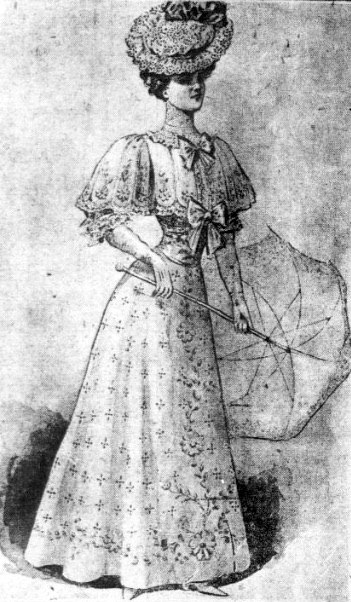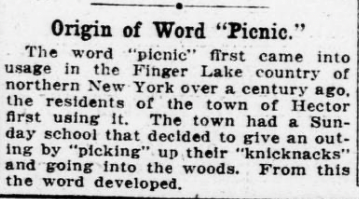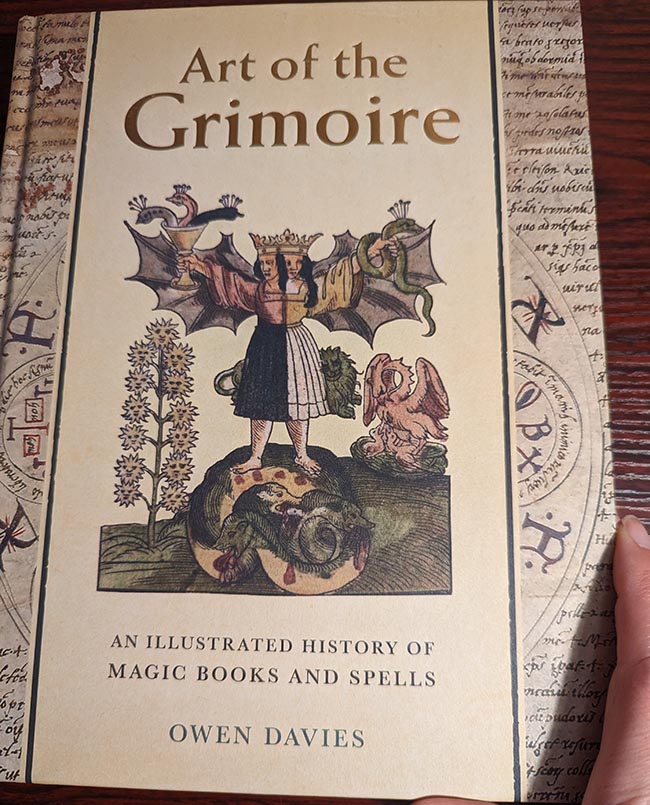
The author of this article felt that the women of 1899 would greatly benefit from growing roses for profit and producing their own attar of roses.

Culture of the Rose
Money to Be Made in Extracting the Attar
There is money for American women in raising flowers for the extraction of their perfumes,” said an expert of the Department of Agriculture the other day. “It is light and easy work; the apparatus required is not at all expensive, and the processes involved are comparatively simple. The making of attar of roses, for example, is not in the least difficult or arduous, while there is always a market demand for the article. Indeed, the pure stuff is almost impossible to get, owing to the customary adulteration of the foreign product.
The women and children of many a family in this country might earn quite a little harvest of dollars by the home manufacture of attar of roses, of which the United States imports about $300,000 worth annually. There is not great trouble in growing the flowers, inasmuch as the roses always preferred for this purpose are of common, rather than fancy varieties, which, while less beautiful perhaps than the delicately bred hothouse kinds, bloom more freely and have much more perfume. This means that their petals contain a greater quantity of the essential oil which contributes the delicious smell, and this is the so-called attar, formerly priced in Oriental countries at its weight in diamonds. You may buy it now at $3 an ounce, but it is sure to be falsified to a large extent with oil of geranium.
Origin of the Attar
You may remember that it was a woman, the favorite of an Eastern harem, who first discovered attar of roses. Through her garden had been made to flow an artificial stream of rose water, and she noticed one day that oily drops floated upon its surface. Through sheer idleness she gathered some of them in her hand, smelled them, and experienced an altogether new delight. These drops were of the oil, or attar, or rose, and hence originated a manufacture which now has its principal center in Bulgaria – a region the climate of which, on the southern slopes of the Balkans, is not particularly difference from that of wide areas in the United States.
In fact, our climate and soil over extensive regions appear to be excellently adapted for rose growing, while, as I have said, the preparation of the attar can be accomplished without great outlay or much preliminary experience. The main question to be settled in advance by the intending grower is whether in a given place the flowers will grow rapidly enough and be rich enough in oil to compete with the foreign product. What is chiefly required is plenty of sun’s heat, and of this there is no lack over a large part of the United States. The most famous rose farming districts of Europe do not appear to possess any climatic advantages over what we can furnish. The American sun is a powerful agent in summer, even as far north as Canada.
For the production of attar of roses hardly any apparatus is required except a simple still, which costs very little. Probably the most important difficulty in the way of the American manufacturer lies in the wholesale adulteration of the European attar, which on that account is sold so low in the market as seriously to antagonize competition. Nevertheless, pure rose attar is now being made on a considerable scale in Saxony, and is holding its own in the market, although that country is not nearly so well adapted for rose culture as the United States. Especially in the southern states and in California where roses bloom in extraordinary luxuriance, it may be expected that the attar, which is our principal perfumery import at present, will be produced before long in great quantities, perhaps rivaling the foreign article.
Manufacture of Rose Oil
Of course some know how is required in this kind of work, and it must be remembered that the beginnings would be altogether experimental, inasmuch as the manufacture of rose attar has hardly been tried as yet in this country. I do not see why it should not succeed, however, inasmuch as the market demand for the product is unfailing. One should remember that roses differ vastly as to the amount of oil contained in their petals, and that this is true even in a given variety, the matter being influenced largely by climate and soil. They require a rich soil, and the fertile uplands of the interior will probably be found most suitable for the production of freely blooming and odoriferous blossoms. The roses employed for attar making in Europe are the “red damask” and the “Presence.”
In the production of perfumes for market, there is no reason why American women should confine themselves to attar of roses. You must realize that this branch of industry – I mean flower farming in general – is conducted on a vast scale in Southern Europe, tens of thousands of acres being given up to it, and there is no good reason why we should not set up an opposition in this country. One may say that labor is cheaper over there, but this is a kind of work in which women and children in the United States may engage, with no loss of time to the latter and with little to the former. What the women are looking for nowadays is something new in the way of profitable employment – occupation, at all events, that will bring in even a few dollars which they can call their very own. Some physical toil, more or less heavy, is involved in the cultivation of roses, but the utilization of these and other flowers for the making of perfumes involves no arduous effort, and boys are usually at hand to do the planting and digging.
Other Perfume Flowers
The oil of rose geranium, as I said a moment ago, is largely employed to adulterate attar of roses, but it is used also as a legitimate perfume material, agreeable even if not equal to true oil of rose. A great deal of it is imported into this country every year, being derived from three well-known species of the plant, one of which is the common rose geranium of our windows and gardens. These geraniums are grown for the perfume market on an immense scale in Southern Europe, in Corsica, and in Algiers, the plants being harvested a little before the opening of the flowers, when the lemon-like odor which they at first possess gives place to the odor of rose. To get the odoriferous essential oil, the entire plant is put into the still, and sometimes rose petals are added to improve the quality. There can be no doubt that the rose geranium may be grown profitably for perfume in properly chosen areas in the coast belt of the south and in southern California, where an oil of geranium can be produced equal to the best French article.
It seems likely that violets may be grown for perfumery in this country, though only in the warmer regions. Their culture for general purposes has already been highly developed in California, where sometimes they are grown in the shade of great oaks. But where purposes of perfumery are taken into view, it must be considered that the cost of growing and of gathering so small a flower in the quantities required for the extraction of its odor is very large. Thus, even in Europe, the cost of the perfume is so great that true violet in a pure state, though much in demand, is little used, a composition of orris root with other ingredients being commonly substituted for it. Recently the chemists have succeeded in evolving in the laboratory an artificial violet perfume that is very like the real. Never the less, violets are now extensively grown in the south of France for the extraction of their perfume, and sooner or later this industry is likely to be imitated in the United States.
Extracting the Perfume
There is no reason to doubt that the tuberose could be grown successfully and on a large scale as a perfumery plant in Florida, and some of the other Southern States. In the South of France it is cultivated on an immense scale, its perfume being extracted by the so-called “enflowering” process. This process consists in placing the blossoms in contact with thin layers of grease spread on panes of glass in frames, the flowers being renewed from day to day. Fats of all sorts have a special affinity for perfumes absorbing them readily, and thus the grease, which is a refined lard, takes up the odor from the blossoms, becoming at length saturated with it. Then the lard is steeped in alcohol, which has a still more pronounced affinity for perfumes, and it withdraws the odoriferous essential oil from the grease. Thus eau de cologne is made.
The perfume of jasmine is said to be almost the only one that cannot be imitated by combination of other odors. It is highly prized in the market and brings a good price. Sometimes more than 1,500 pounds of the essential oil of this kind of flower is imported into the United States in a year, and the price of it has ranged as high as $44 per pound. Experts are of the opinion that jasmine might be produced for perfume in this country, warm regions being selected for the purpose, though the cultivation of the plants and the gathering of the flowers would be expensive. Quite otherwise, in point of cost, is it with the orange, which, while already yielding large profit to cultivators in this country, might be made to produce much additional money through the perfumes which are extracted from its blossoms, its leaves, and the rind of its fruit. In fact, it may be said that no tree is so profitable to the flower farmer as the orange. Orange flowers in extreme southern Louisiana possess a stronger odor than those of any other country. Probably you are aware that the oil of neroli, distilled from orange flowers, is as valuable as attar of roses by the ounce.
Lavender and Rosemary
In California conditions seem to be favorable for the production of lavender, which is a plant of the mint family, furnishing an essential oil that is imported into this country in large quantities. The plant is a native of the mediterranean region, but, transplanted to England, has been so far improved there as to yield a better quality of oil than is obtainable anywhere else. During the last five years the United States has imported nearly 48,000 pounds of oil of thyme per annum, the bulk of which comes from Southern France, but it is believed that California might just as well furnish all that is required of the article. The same may be said of rosemary, that attar of which is extensively used in perfumery, and especially for scenting soap. Eau de cologne cannot be made without it, and to its stimulating effect is due the refreshing quality of perfumes containing it. The importation of orris root amounts to about 240,000 pounds annually. This is a standard article, affording a perfume resembling that of the violet. The part of the plant utilized is the thick, knotty rootstock, which, when taken up and dried, slowly develops a pleasant odor. This being extracted by distillation, furnishes what is called “orris butter.”
Native Perfume Oils
A few American plants already yield perfume oils on their native ground, and many others ought to receive attention from this point of view. Oils of sassafras and wintergreen are distilled in considerable quantities, and are employed for scenting and flavoring. Oddly enough, the oil of wintergreen is now produced almost exclusively from the sweet birch, being chemically identical with that of true wintergreen, and more cheaply obtained. The wood of the red or pencil cedar yields a finer perfumery oil than the cedar of Lebanon, and is now distilled in this country as well as in Germany. The rootstock of the wild ginger, known in trade as “Canada snakeroot,” furnishes an aromatic oil which has a place in price lists, and the swamp laurel exhales a powerful aromatic fragrance that might well be available for soaps and perhaps for finer purposes.
The chemists are beginning to learn how to reproduce the more valuable perfumes in the laboratory, and in this way they have succeeded in evolving from coal tar the true scents of new-mown hay and carnations. It may be that eventually these artificial smells will take the place of those now derived by distillation and otherwise from flowers and other parts of plants.
Source: The Washington weekly post. (Washington, D.C.), 23 May 1899.


